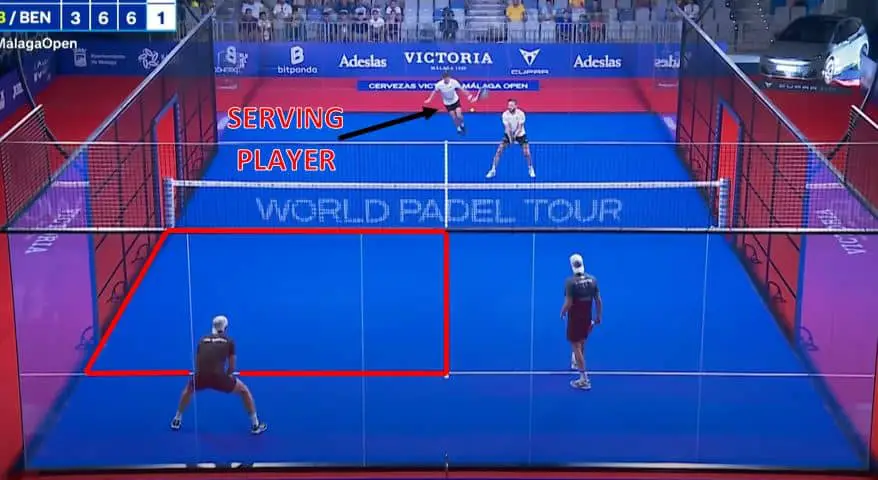In most racket sports the serve is a hugely consequential part of the game. Players are expected to win the vast majority of points and games that take place while they are serving. Therefore, if you can force your opponents into mistakes and put them under pressure consistently whilst they are serving, you’ll go a long way towards winning games and matches.
Padel is no different! A great serve can get the point off to a fantastic start for the serving duo, but a great return can also help get the returning duo on to the front foot and in control of the point.
Given that it is important to return the ball well in order to break the opponents serve, many new padel players will wonder exactly what they are allowed to do when returning the ball. For example, are they allowed to return the ball by reaching forwards and volleying it? That’s the question I’ll be covering in this post.
So, can you return a serve with a volley in Padel?
No, you cannot return a serve with a volley in Padel. You are permitted to volley the ball at any other time, except for when returning your opponent’s serve. This means that when receiving a serve, you must allow the ball to bounce once before striking it. If the receiver volleys the ball, they will lose the point.
When I first found this out, it made me wonder why we weren’t allowed to return with a volley. There are no definite answers to this, but a theory I’ve come up with is that because padel serves are underarm serves and do not travel at great speed, it may not be wise to let people advance and volley. This may give too much of an advantage to the receiving duo, allowing them to immediately put the serving team on the back foot by executing a nicely placed volley. By creating a rule where the serve has to bounce before the receiver can hit it, Padel allows the serving player to move forwards towards the net earlier than their opponent and gain a slight positional advantage.
Even if the receiving player was allowed to return the serve with a volley, there is no guarantee that this would be a winning strategy. Volleys are a very tough shot to execute accurately and consistently – especially for amateur players – so in a way, the volley return being outlawed by the rules of padel may be a bit of a blessing in disguise!
How Many Times Can You Allow A Serve To Bounce Before You Hit It?
So, if you can’t volley the ball in response to a serve, what is the maximum number of times you can allow the ball to bounce before you return it?
Basically, if the serve lands in your receiving box shown in the picture below, the ball must be returned before it hits the ground for a second time. If the ball does hit the ground a second time before it is struck by the returner, the returning team will lose the point.

As a returner, you can also allow the ball to bounce off the side wall before you return it. This is always a good option if the serve gets extremely close to the wall before it lands! If you’d like to know more about how many times the ball is allowed to bounce when receiving serve, click here to read one of my other posts on that topic. I’ve included multiple examples within that post that should make everything crystal clear!
Can You Serve With A Volley?
We’ve established that you can’t return a serve with a volley, but can you serve by volleying the ball? The answer to this is no. As per the rules of Padel, all players must bounce the ball into the ground and then hit the ball when it is below waist height in order to serve properly. Therefore, a player is not allowed to throw the ball up in the air and then volley it before it hits the ground.
Conclusion
If you’re a newcomer to Padel, I hope that this post will give you the extra bit of info that you need in order to be a little more prepared to return a serve in the right way. During a game, it is vital that we don’t return the serve in the wrong way and gift our opponent easy points. Getting the ball back into play forces our opponents to try to win the point during a normal rally, and this can allow them to make mistakes that we can punish.
If you want more technical advice on how you can make yourself into a better padel player, then keep your eyes on Padeld.com! I’ll have a lot more in depth guides coming your way soon.
